What to Do When You Admire an Artist
This post is about art, admiration, and spirituality and enabled by Arts Promotion Centre Finland. This is the ninth blog post of the project; see the first one here, the second one here, the third one here, the fourth one here, the fifth one here, the sixth one here, the seventh one here, and the eighth one here!
This week, I finished the last oil painting of the new series. It’s pretty large – about 27.5 x 35.5 inches – and I think it completes the series well because it’s the most dynamic of the seven.

My goal in the series was to express spirituality through abstract art. The plan was to explore Wassily Kandinsky’s idea about releasing the inner sound of the shapes and get inspired by art from the 16th to 18th centuries. This last painting is a salute to my favorite artist: Peter Paul Rubens (1577-1640).
Going Deeper – The Experience of Working with a Grant
Sadly, my three-month period of working with the grant is now coming to an end. During that, I painted a series of seven oil paintings, wrote several blog posts and weekly emails, plus a fictive essay in Finnish that that will hopefully get published somewhere. I still have the summarizing report to write and several paintings to varnish, but all the main work is done.
During the past months, my little studio has been filled with paintings. Every morning, before anything, I have gone there to both worry about the project and to enjoy the kind of excitement that only uncompleted work can give.

Despite the theme of spirituality, I haven’t lit any candles, meditated, or prayed. But I have slowed things down and taken time to question without forcing out the answer. At the same time, a clear schedule and content plan have brought structure to my days. I am grateful for the opportunity of doing this kind of deep work.

Many times when we create art, we hurry. A part of it is that we want to see the piece finished, but there’s more too. Art can make us feel uncomfortable and bring up memories we would rather want to leave behind. But making art can also point out stiffness, clumsiness, and differences between who we are and the artist we admire.
When You Admire an Artist – Rubens for Example!
Dear Peter Paul Rubens, I want to paint like you. I want to master the curvy lines, the soft transitions from one shade to another, the effortless flow in the composition, and something that I can’t name but that makes my heart beat faster every time I see one of your masterpieces.
With masterpieces, I mean paintings like “Four Continents” or “Four Rivers of Paradise” – this artwork has two alternative titles.

Experts used to think that the painting had four continents and four rivers. Europe is the woman on the left, and her partner is the river Danube. Africa is the black woman, and her man is the Nile. The woman in the center back represents America, and her man is Rio de la Plata. The woman on the right is Asia, and her man is the Ganges. However, there’s a competing interpretation of the river figures. They may represent the four great rivers of the ancient East/paradise: the Euphrates, the Tigris, the Gihon, and the Pishon.
Rubens was born in an era where a shape could not be freed in the way we now can. He had to build a representation layer that people could explain and understand in a specific way. We humans have a strong need to label things. For example, when people see my work, they immediately begin to describe what they see.
But my paintings can produce many interpretations because I try to make shapes so that they raise several different kinds of associations. When painting, I focus more on how the shapes and colors interact with each other, not on one interpretation of what they represent.
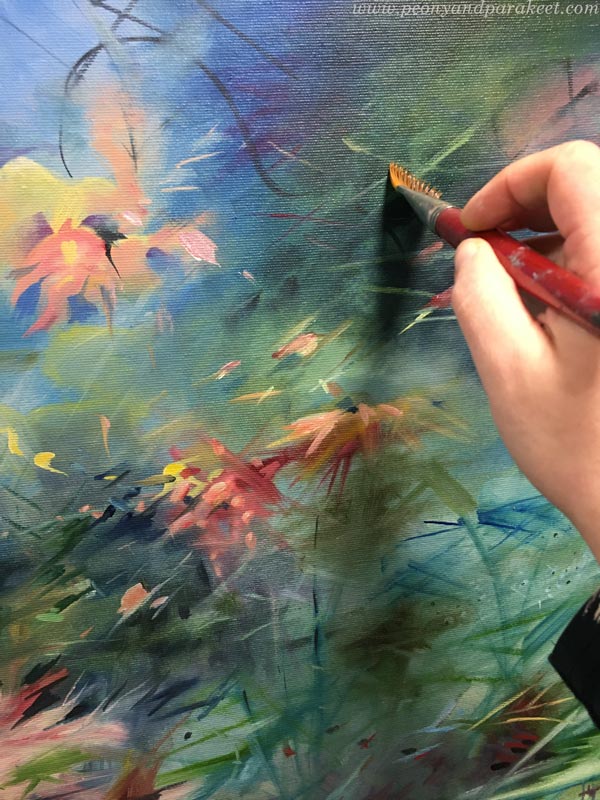
Rubens didn’t have the luxury to leave the shapes abstract – it would not be treated as a completed painting in the 17th century.
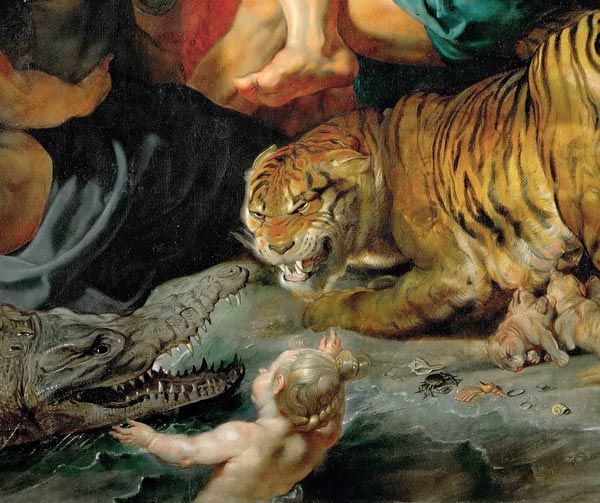
And still, his expression has such a sense of mystery that it draws me in and forms a spiritual connection with humankind.
Creating with Hurry vs. Taking Time to Imagine
Recently, I have started to feel that it’s ok that I am not Rubens, Kandinsky, or any other admirable artist. By taking time for imagination, I still can feel a connection with them.

Rather than trying to reproduce what my favorite artists have created, I imagine that my little studio is a time capsule where they hang around. My sensitivity for them can get mixed with the rest of my imagination, and produce my kind of work, still supported by them.

The core of art is that we are free to imagine. We are allowed to break the limits of time, explore the inner world, and go beyond literal ideas and explanations.

This journey has taught me that it is possible to live with wild thoughts no matter what direction they take. Like a rare animal, a thought can be shy and fast, and thus, require sitting before the trust is formed.
I started the project with the definition of spirituality, but now the greatest lesson seems to be to let go of any single definition and find more, no matter what the subject is.
I’d love to hear your thoughts on this post. Who do you admire, for example, if not anything else!
Roaming Instinct – Why Not to Limit Artistic Inspiration
This post is about artistic inspiration and spirituality and enabled by Arts Promotion Centre Finland. This is the seventh blog post of the project, see the first one here, the second one here, the third one here, the fourth one here, the fifth one here, and the sixth one here!
My second big painting is called “Roaming Instinct.”
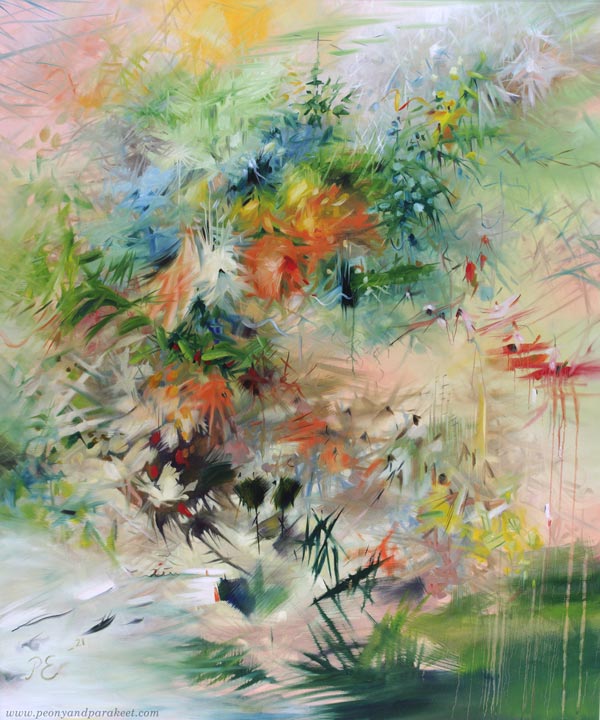
This painting and the previous big one have been really significant to me.
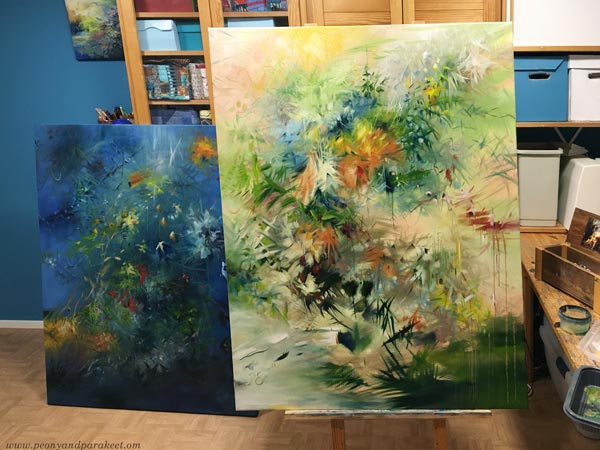
Regular practice and the big size have helped me to relax and let go – break the glass between the inner and the outer world, as Wassily Kandinsky would say.
Can There Be Too Much Artistic Inspiration?
As long as I have created art, I have been inspired by a variety of things. It has often felt like it’s too much.
Here are some:
- old portraits in fancy dresses
- houseplants and their pots
- midcentury-modern interiors
- colorful kitsch
- primitive dolls
- dressage horses
- English country gardens and cottages
- Tibetan yaks
- base jumping
- mountain climbing
- skateboards
- graffitis
- physics
- outer space
- mathematical algorithms
The list is ongoing and overwhelming!
I think this is not exceptional at all. The world is full of artistic inspiration. Like animals, we have a roaming instinct to explore further. No wonder they say that the hard choice for art-making is to choose what inspiration to pick.
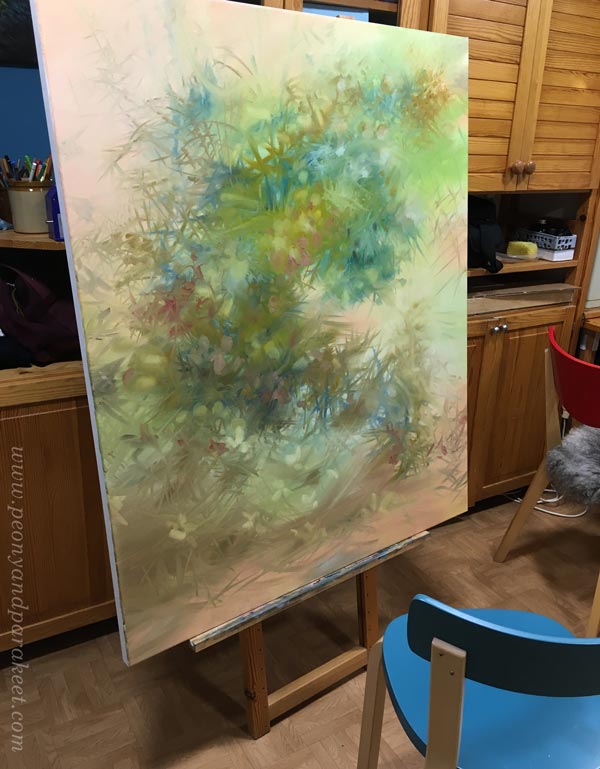
But recently I have felt like I don’t have to pick. No matter what I paint, I can bring it all together. If I paint a flower, it can look like a nomad, or a mountain, or a furry animal, or a space station, I don’t have to define.
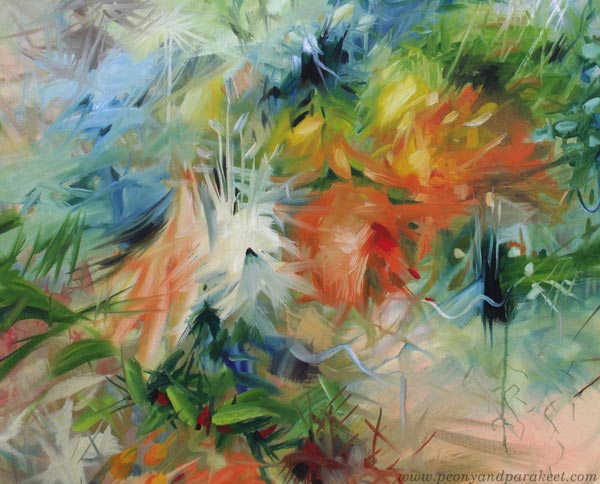
Every element can have a strong identity and the overall scenery can have a strong sense of location even if I can’t name it. Some people say my paintings are underwater sceneries, others see outer space. For me, they can be both, and yet neither. I feel I am delivering more than what can be labeled.
Finding Your Artistic Voice/Style/Spirituality/Identity – Whatever You Call It!
I have created art for a long time expecting to become better at what to pick and why. I assumed that art would make me know myself better and yes, it has. But it’s surprising that now when I am painting, it doesn’t really matter who I am and how I get inspired. My art is not to limit or to focus but to integrate.
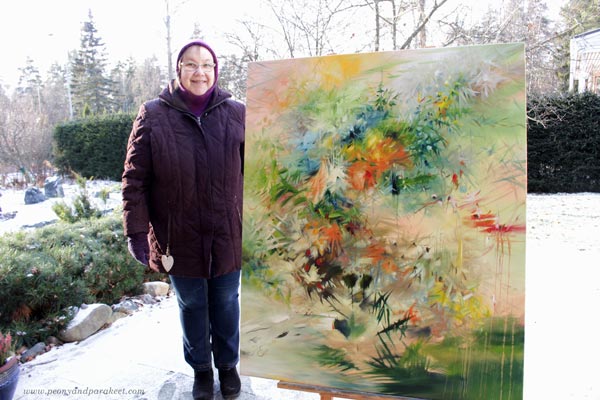
When I started the project, one of the goals was to get clearer about my spirituality. My question was: “Can a former engineer create spiritual art?”
At the moment, I find it difficult to separate physical from the spiritual. All material things seem to have a spirit and everything immaterial seems to have a figure. When I paint, they mix and merge, and after a while, the painting seems to have a mind of its own. It tells what it wants, and my job is to obey.
Does this make sense? What do you think?
Longing for Freedom – An Intuitive Floral Still Life
This week, I have an intuitive floral still life! It’s the biggest painting that I have made so far – about 47 x 39 inches.
This post is also about artistic and spiritual freedom and enabled by Arts Promotion Centre Finland. This is the sixth blog post of the project, see the first one here, the second one here, the third one here, the fourth one here, and the fifth one here!
About Flying and Freedom
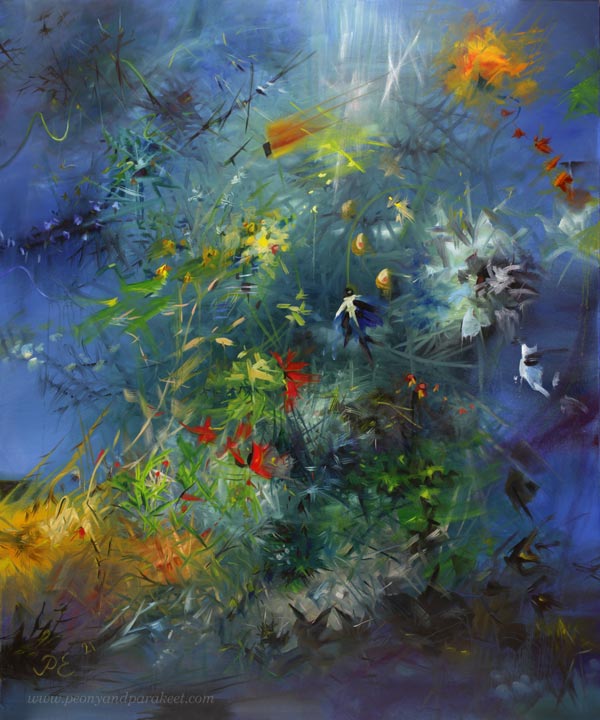
Our back garden is a mall for birds. We get to see many species and, if lucky, some butterflies too. I became interested in birds in the early 90s when I shared an apartment with a friend who had budgies and a cockatiel. Living with the birds made me notice them outside too. And what a great ability they have – flying!

“Free like a bird,” they say, and yes, flying and freedom do belong together. But when a blue tit enters a small bond under our dining room window, I see worry. Worry if he manages to clean himself before my beagles run out of the door or before bigger birds take their turn. His freedom is limited like anyone’s in this world. Even a dove couple who I jokingly call “the owners of the spa” are frightened by their surroundings. Last summer, a dove was killed near our home, maybe by a fox, and it took some time for the couple to reappear.
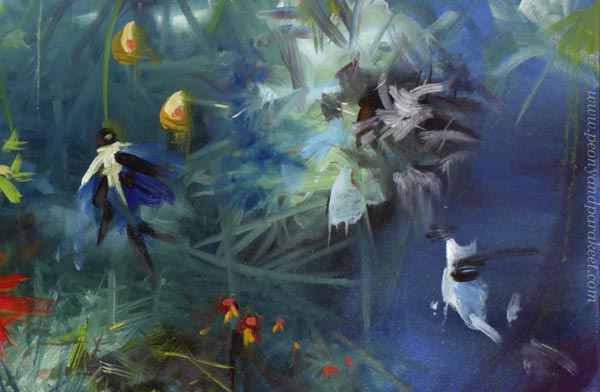
Flocks, couples – we are born not only to be free but also dependent on each other. When we have each other, we are safer than alone.

But birds have taught me that the longing for freedom is also about safety. The blue tit feels safe enough to wash on the ground because he is free to take off. Insignificant dots, that’s what we all are to him. And still, he also enjoys that we do exist – we who keep the bond clean and pretty.
Intuitive Version of 17th Century Floral Still Life
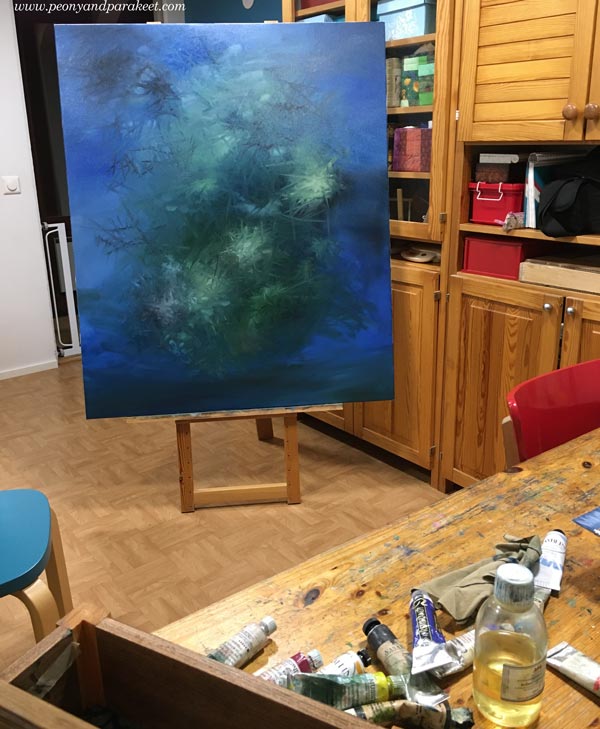
I wanted this painting to be my version of 17th century still lives. They had black backgrounds and were filled with things that had hidden meanings.
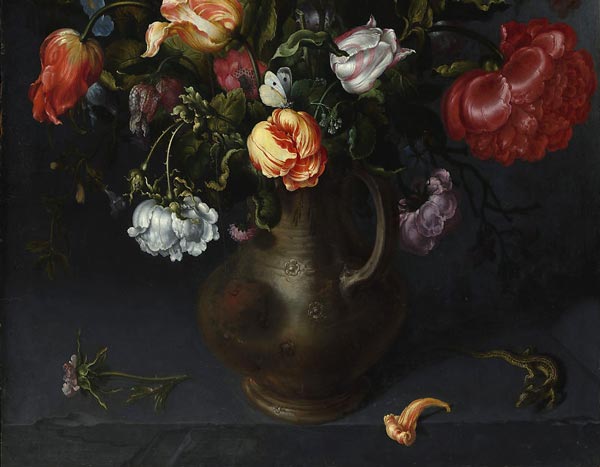
Nowadays, we can be freer and let the colors and shapes hit straight to our souls. We have the artistic and spiritual freedom to create intuitively and also, feel safe enough to open our inner world to others.
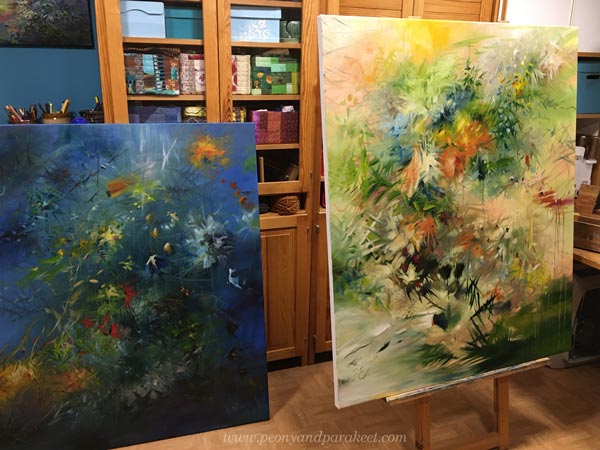
Freedom – What are your thoughts? Does it show in your art?
Getting Inspired by Removing the Obvious
This week, I have finished the first painting of the new series, enabled by the grant that I got from Arts Promotion Centre Finland. This is the second blog post of this project, see the first one here!
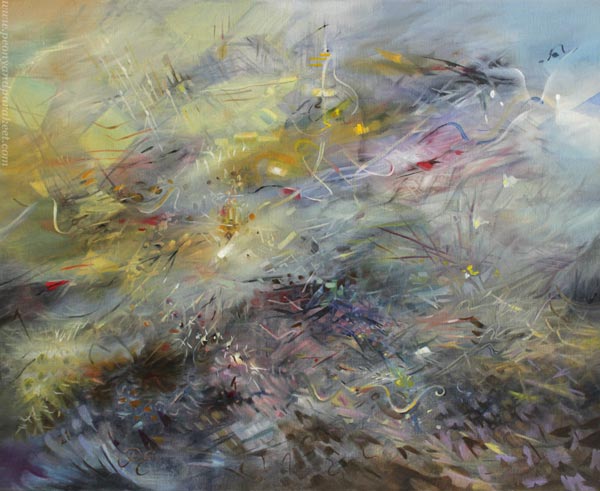
I wanted to combine two different styles for the painting.
Struggling with Differences
First, I wanted to honor Sandro Botticelli, a masterful painter from the Italian Renaissance, and include some of his colors and ornaments. I especially like the pastel colors in his paintings. Yellow ochre and ultramarine blue look beautiful in the mixtures. Botticelli’s painting The Madonna of the Pomegranate was my main inspiration for the color scheme. I also listened to Renaissance choir music and imagined how he felt when he painted and analyzed his work.
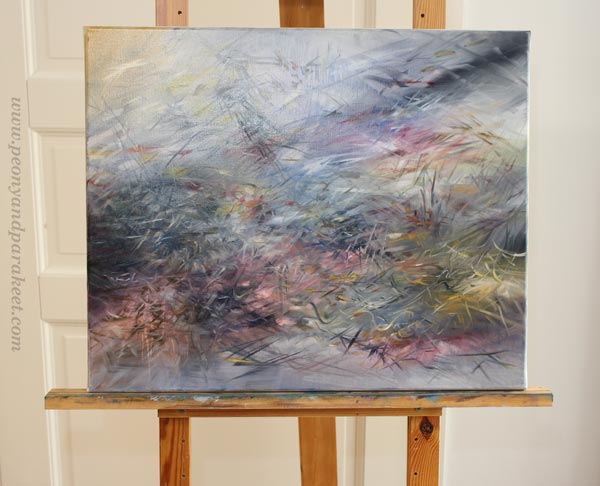
I also had another tutor, Wassili Kandinsky, from the 20th century. I reread his books On the Spiritual in Art and Point and Line to Plane and imagined him talking about releasing the inner sound of a shape.
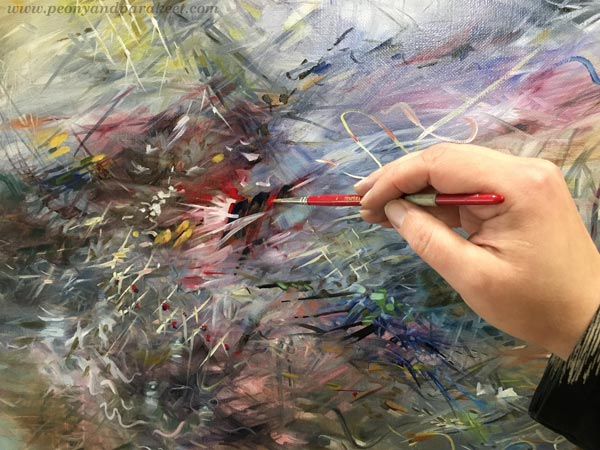
But knowledge and advice and all the left brain stuff can only help to a certain point. When focusing on facts and words, I lost not only Botticelli’s and Kandinsky’s voices but my own too. I ended up making too bold moves and the spirit of the painting was lost.
Indoors – Outdoors
Fortunately, I had to take many sittings because dogs require pauses. It feels that I am constantly moving from indoors to outdoors nowadays!

Then it hit me, that painting, life, and spirituality are not about defining two states like outdoors and indoors. I can bring indoor elements like lamps with outdoor elements like trees. Botticelli broke the division by painting decorative flowers that continued from the grass to clothes.
Removing the Obvious Limitations
And if indoors and outdoors can be one, why not break other obvious limitations too – for example, combine science and beliefs in the same painting.
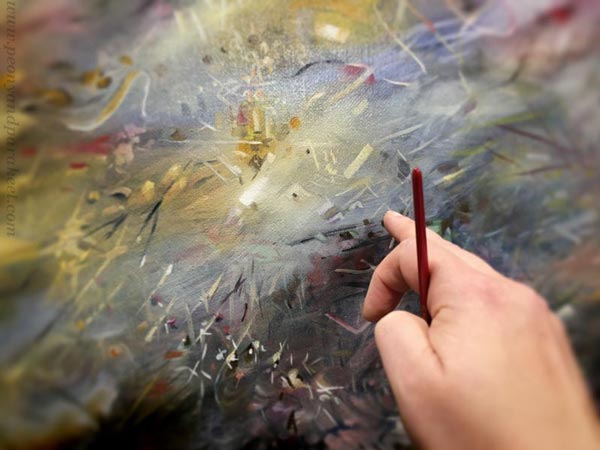
So I painted a chandelier, Botticelli’s divine rays, a light bulb to honor Thomas Edison, a tiny cross to represent spiritual beliefs. I allowed one association to freely lead to another. My mind was exploding when I thought about light and its all interpretations.
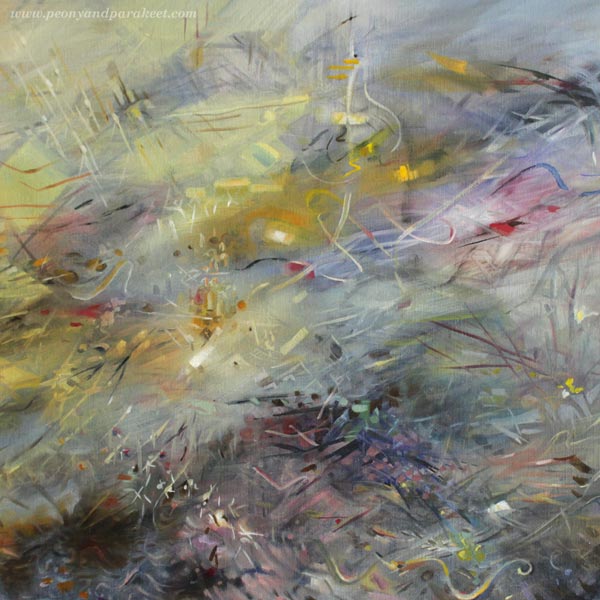
Some people collect chandeliers, others search for a proper lightbulb in a supermarket. Sometimes we believe in science, other times we have different beliefs. Some see angels instead of flowers. Sometimes we need darkness to see light, and other times we may need more light to the lightness. Light can be glitter that saves the day or a more permanent feeling of hope. Art and spirituality don’t have to be separate from the rational and mundane, but they can be the glue between the inner and outer world. We can remove the obvious, and express the diverse experience instead of a single thing.
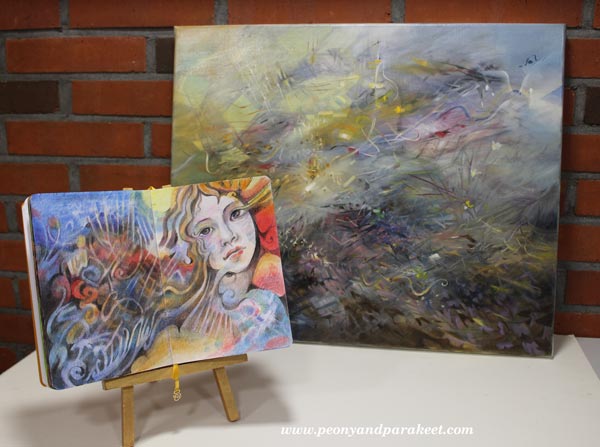
Releasing the Inner Sound
In the light of removing the obvious, Kandinsky’s idea of releasing the inner sound can simply mean this:
Make subtle changes to an element
so that the obvious interpretation becomes vaguer
and a variety of new ideas are raised.
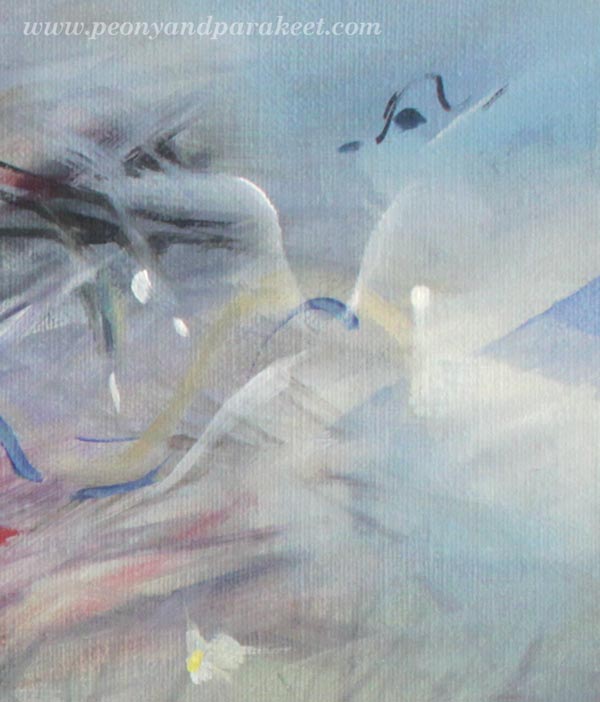
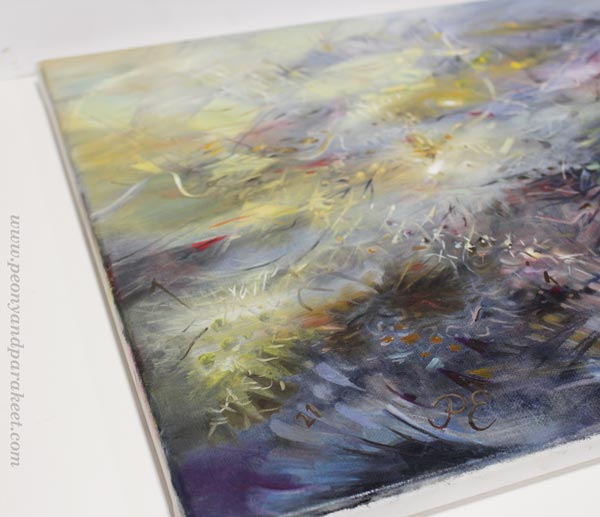
What could “removing the obvious” mean to you? Tell me what you think!